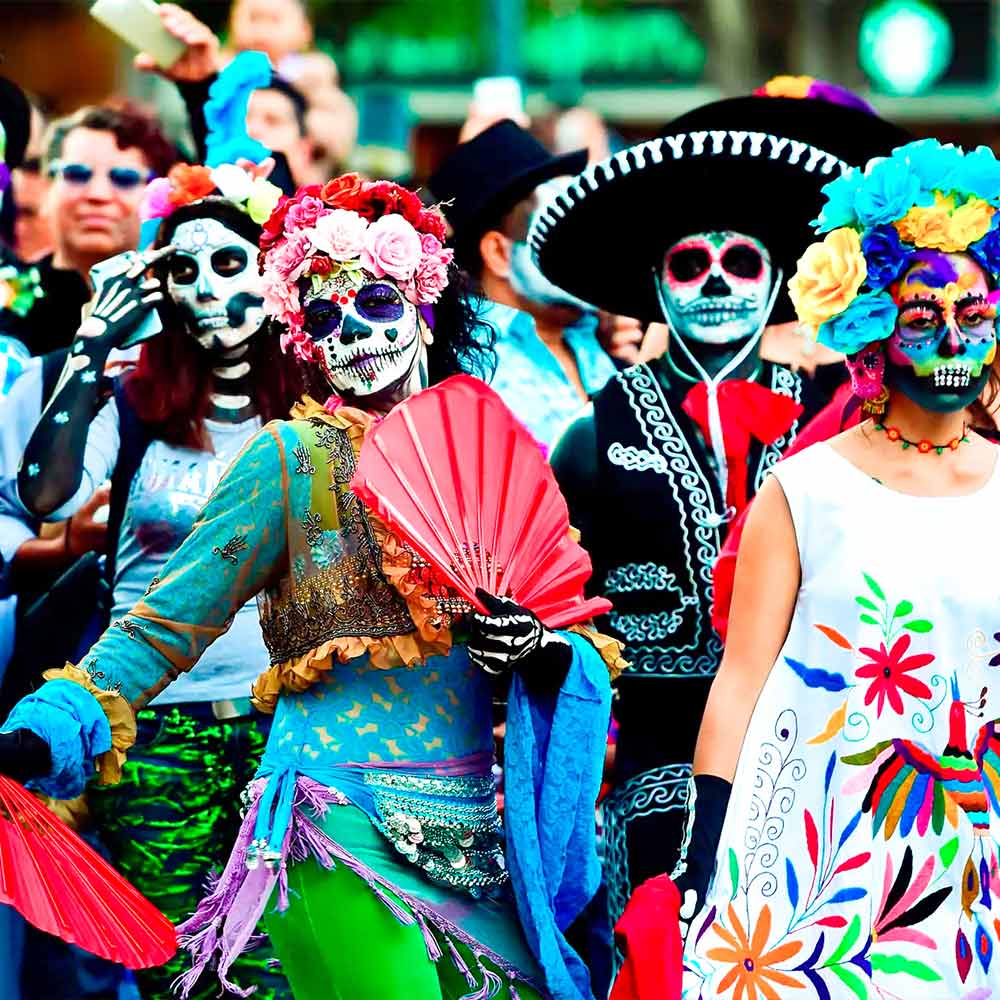Dia de los Muertos, or Day of the Dead, is a vibrant and rich cultural tradition celebrated in Mexico and among communities of Mexican heritage around the world. It is a time when families honor the departed and celebrate their lives through elaborate rituals, including the art of dressing up. Embodied through colorful garb, intricate face painting, and symbolic accessories, dress-up on Dia de los Muertos bridges the past and the present, guiding souls between worlds with a pageantry that defies death’s somber veil.
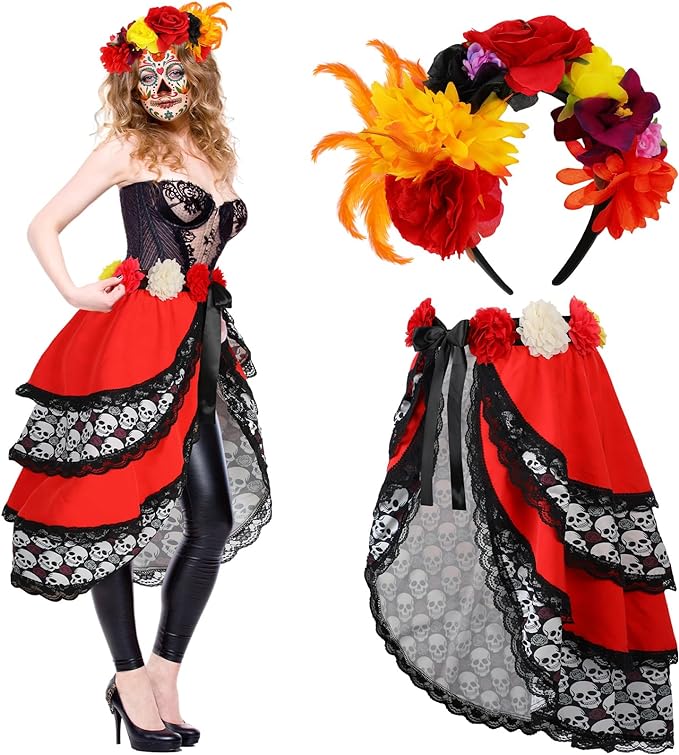
Part I: Historical Roots and Cultural Significance
The Ancestral Origins of Dia de los Muertos Dress-Up
The tradition of dressing up for Dia de los Muertos harks back to ancient Mesoamerican civilizations, such as the Aztecs, who celebrated rituals honoring their deceased loved ones. These early festivities laid the foundation for contemporary practices, merging with Spanish Catholic traditions following colonization. The resulting syncretism gave rise to modern Dia de los Muertos celebrations, wherein dress-up plays a crucial role in the festivities.
The Symbolism of Costumes in the Celebration
Costumes worn during Dia de los Muertos are symbolic, often reflecting the dual nature of the festival’s outlook on death. Attires are typically vibrant and elaborate, with attire such as the “La Catrina” – a figure characterized by elegant dresses and sophisticated hats. These costumes are not just for the decorative purpose; they are a homage to the deceased, an epitome of life’s fleeting nature, and a statement of respect to the spirits.
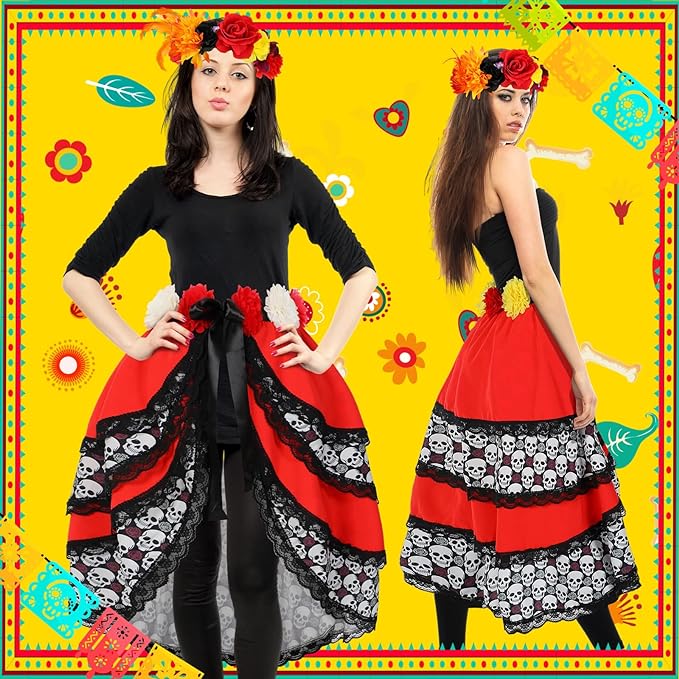
Part II: The Art of Dia de los Muertos Attire
Craftsmanship Behind the Masks and Makeup
Central to Dia de los Muertos dress-up is the skull, known in Spanish as “calavera.” Face painting to resemble a skull is a meticulous and artistic endeavor, often incorporating flowers, intricate patterns, and vivid colors. Makeup and masks capture the joy of life and respect for deceased loved ones. The craft behind these masks translates into a shared community activity that strengthens bonds and keeps traditions alive.
Incorporating Traditional Garments and Accessories
Traditional Dia de los Muertos garments often include clothing that the departed loved in life or that reflects the cultural heritage of the region. These may include serapes, sombreros, huipiles, or rebozos. Accessories such as marigold crowns, symbolic jewelry. And handcrafted ornaments enhance the visual storytelling of the costume and serve as a bridge to the historical and familiar.
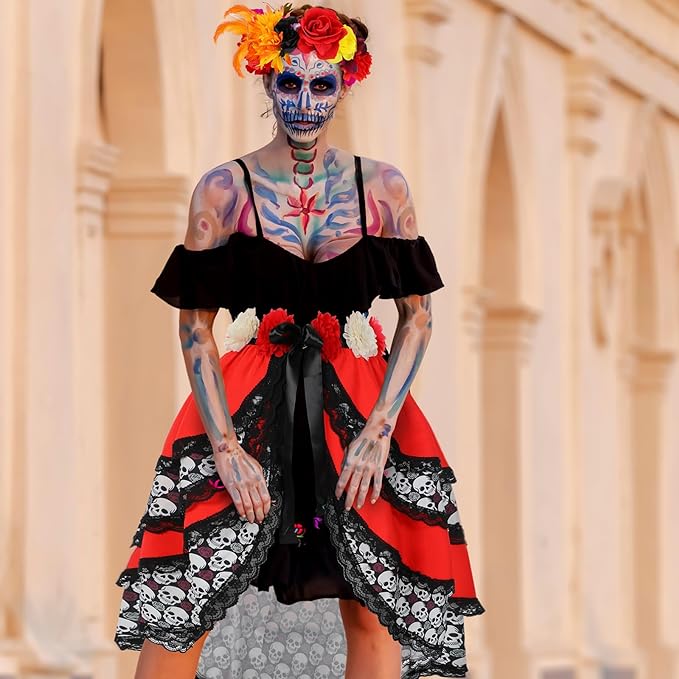
Part III: Contemporary Practices and Innovations
Adapting Ancient Traditions to Modern Contexts
As Dia de los Muertos celebrations spread and evolve, so too do the practices of dressing up. Participants creatively adapt ancient traditions with new, contemporary elements. All while maintaining the spirit and purpose of the ritual. From the incorporation of pop culture motifs to the use of eco-friendly materials, modern dress-up customs demonstrate the dynamic and living nature of this cultural heritage.
The Influence of Media and Pop Culture
Popular films and media representations, like the animated movie “Coco,” have both informed and been informed by Dia de los Muertos celebrations. Leading to a resurgence of interest in traditional attire. They have provided visual inspiration for dress-up and have deepened the understanding of the significance behind the garments and makeup used during the festivities.
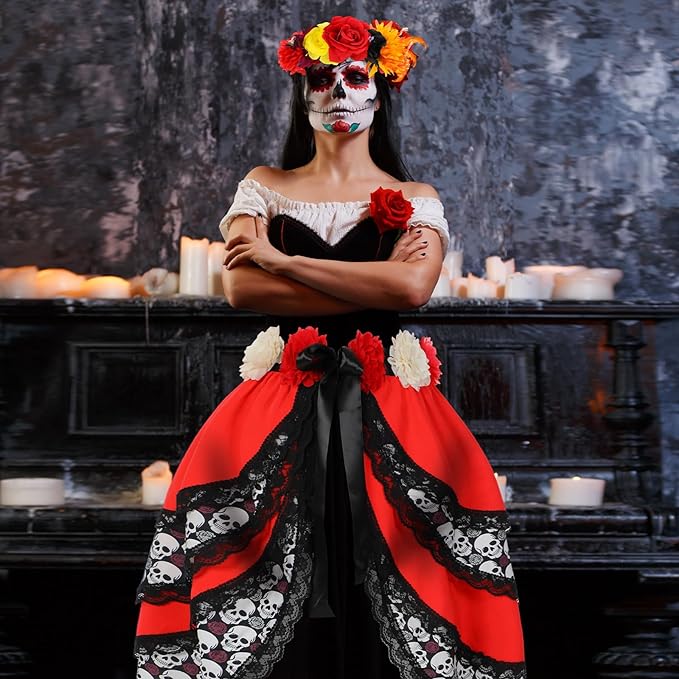
Part IV: The Personal and Communal Experience
Dress-Up as a Form of Personal Expression and Remembrance
Dressing up for Dia de los Muertos is a deeply personal endeavor, connecting individuals to their loved ones and cultural history. It allows for the expression of grief, celebration, and memory through the creative process. The selection of costume elements can reflect the personality or preferences of the departed, making dress-up a profound tribute to those no longer physically present.
Moreover, Dia de los Muertos dress-up fosters a sense of community as friends and families gather to prepare for the celebration. Workshops and communal spaces where individuals can create and apply makeup and costumes together are common, reinforcing the shared cultural heritage. These gatherings transcend dressing up; they are moments of storytelling, laughter, and solidarity, encapsulating the community’s collective memory and identity.
Communal gatherings for Dia de los Muertos serve as a pivotal anchor for the cultural tapestry of the celebration. As participants congregate to paint their faces and adorn their costumes, the air fills with an exuberant spirit of camaraderie. Each brushstroke weaves individuals closer, and the kaleidoscope of fabrics and hues becomes a visual symphony of heritage and identity. In towns and cities alike, plazas, homes. And community centers transform into hives of activity, buzzing with the shared task of bringing the ancestors’ celebrations to life.
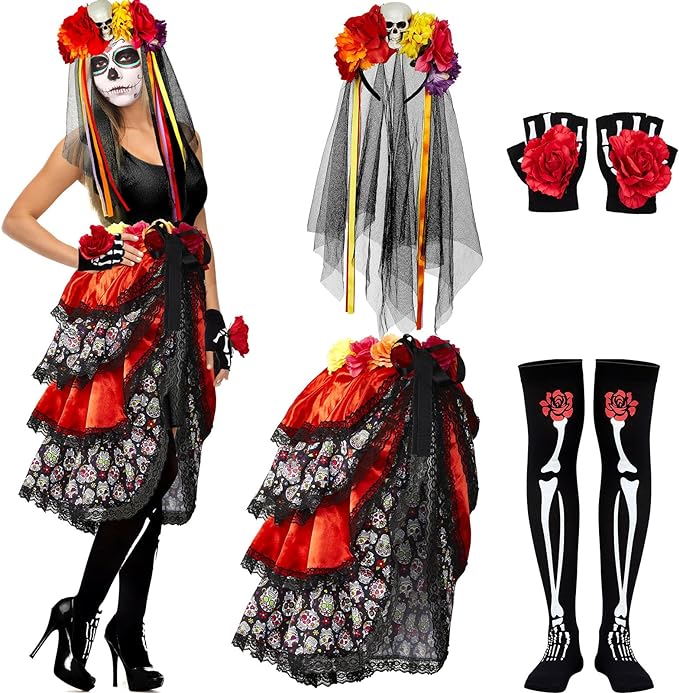
These workshops and meeting places are not merely venues for artistic endeavors. They are sacred spaces for intergenerational exchange and cultural transmission. Stories of the departed are shared, with the younger members listening intently, learning about their ancestry through the evocative process of dressing up. The thump of music, the scent of marigold, and the laughter that rings through these spaces illustrate the joyous defiance of sorrow. Channeling a collective energy that binds the community in a vibrant tapestry of living memory. In every sequin sewn and every hat adorned. The past is honored, the present is celebrated. And the shared heritage is solidified within the enduring heart of the community.
Part V: The Ethics and Approach to Dress-Up
Respecting Cultural Boundaries and Avoiding Appropriation
With Dia de los Muertos growing in popularity worldwide, it’s crucial to approach dress-up thoughtfully and respectfully. It’s essential to differentiate between cultural appropriation and cultural appreciation, especially for those outside the Mexican community. Appropriation occurs when elements of a culture are adopted without understanding their significance or context. Often reinforcing stereotypes or contributing to commodification. To avoid this, individuals are encouraged to educate themselves on the history and meaning behind Dia de los Muertos and engage in practices that honor and respect its traditions.
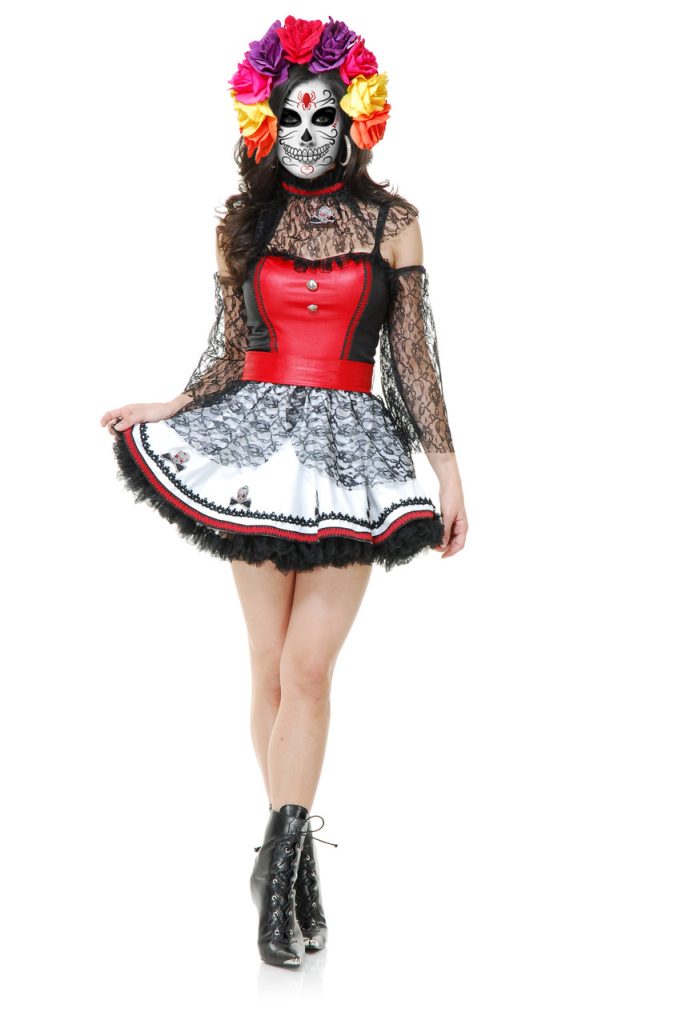
Fostering Authentic Connections
Finally, For those wishing to participate in Dia de los Muertos celebrations respectfully, it’s important to seek out authentic experiences and learn from those who are deeply rooted in the tradition. Participating in community events, workshops, and ceremonies that are open to wider audiences can provide valuable insights and understanding. By approaching these experiences with humility and openness. Individuals can form genuine connections with the cultural essence of Dia de los Muertos and contribute positively to its global appreciation.
